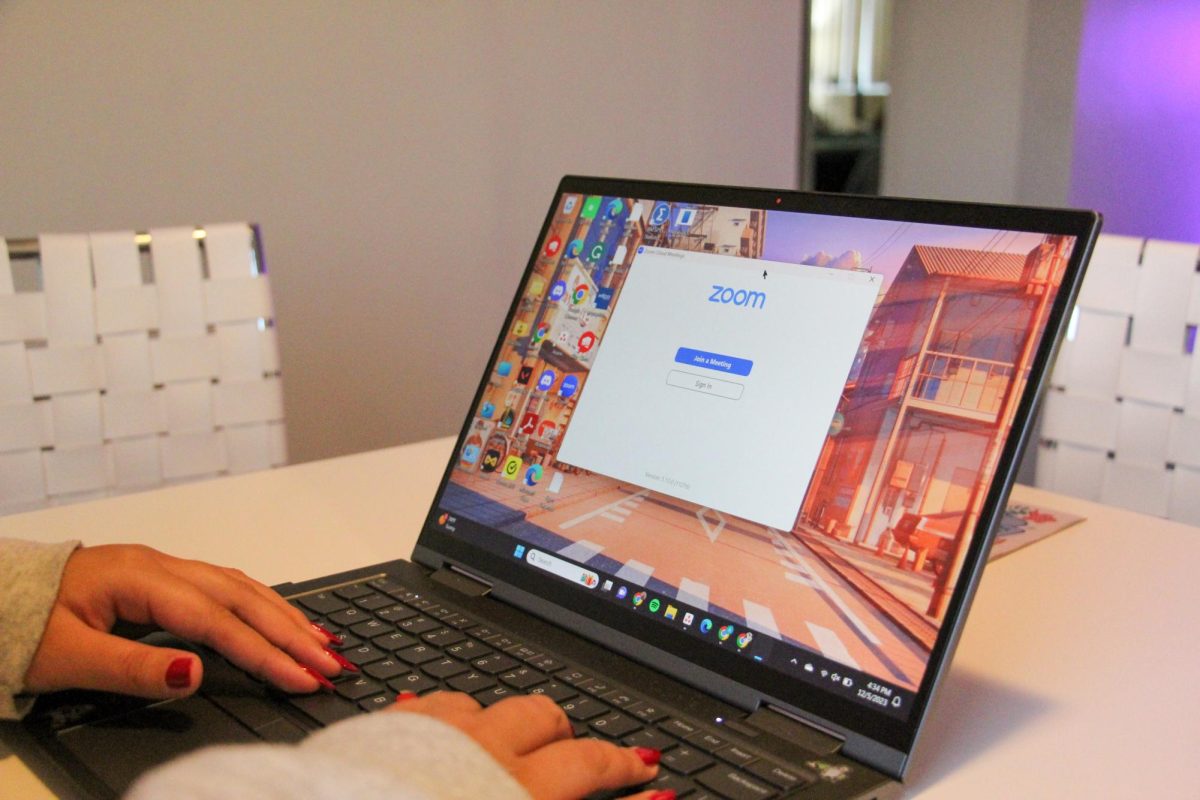At the beginning of the COVID-19 pandemic, many college campuses opted for online course alternatives, whether it was at a scheduled meeting time or through weekly modules.
Over three years since the start of the pandemic, San Diego State students still see a notable amount of online-only courses.
SDSU needs to give its students freedom of choice by providing both online and in-person versions of the same course. Prioritizing in-person options will allow the flawed online systems to be an option, but not the default.
Both in-person and virtual college classes often require a textbook for their course. However, in my experience, online classes prioritize education through the textbook rather than through instructors.
If virtual education is based more on the textbook than the professor, where are students of virtual classes seeing the value in their tuition costs?
The current tuition rates, including fees, at SDSU range from $8,290 for California residents to $20,170 for out-of-state and international students.
This number will continue to grow with the recent approval of the CSU system’s tuition proposal. Starting in fall 2024, tuition will see a annual 6% increase over the next five years.
Many college campuses also require students to live on campus and pay tens of thousands of dollars for housing. Here at SDSU, students are required to live on campus for their first two years.
Currently, a triple dorm and the cheapest Flex 5 meal plan cost students and their families $18,469 for the year. Subtracting the cost of the meal plan, and assuming a student goes home for winter break, this cost equates to roughly $1,583 a month.
Your dorm can run you $1,583 a month to stay inside (on your computer) and complete half of your classes online because you weren’t given a choice.
With such a high cost, it is integral that we give students the education they want and deserve — it’s their money; they should decide how it’s spent.
In my time at SDSU, I’ve taken at least one virtual course per semester. Next semester, I will begin my upper-division courses, and I am required to take two courses that are completely online with no class meetings.
While pursuing my options for the spring 2024 semester, many courses I was interested in to fulfill my requirements were either only offered online or not offered at all.
Virtual courses can be extremely beneficial for students who are commuters, work full-time or have other commitments. Asynchronous class structures provide the flexibility that in-person classes do not, and can be a great option for many students. But this is not the case for everyone.
One example surrounds senior Lauryn Butts, who did the first two years of her undergraduate program online before transferring to SDSU. Though she was used to the virtual model, she still sees benefits in both types of classes.
“General ed courses — I prefer to take online… but as I’m getting more into my major I value in-person classes,” she said.
Junior James Newell prefers the connection and live feedback that in-person courses require. He formed his perspective surrounding online classes while taking a course on JMS 315 Digital Media Principles and Design last spring.
“I don’t mind the testing online, but as far as the learning aspect and trying to ask questions, I definitely prefer either face-to-face or Zoom because at least you’re face-to-face talking to someone on the Zoom call,” Newell said.
Newell also mentioned the definite presence of academic dishonesty. He recalled someone making a GroupMe for one of his online classes to share exam answers.
“It’s not welcome, but it’s way easier to cheat online than in-person,” he said.
Though some professors use LockDown Browser, a program that prevents students from opening other tabs during Canvas exams, many do not.
According to CalMatters, SDSU currently limits the use of room-scanning technology due to ethical and privacy concerns. This means that there are rarely limits for students using other devices to Google search or chat about online exams.
Until course curriculums are updated, or the virtual model is adjusted, those who prefer such options won’t always receive an equal education. With SDSU being such a large school that is costly for many, they need to cater their course options to everyone.
Everyone has different skill sets. Some require more direction and hands-on learning than others. Some people just need a video lecture, caffeine and self-motivation to complete their online courses.
In a perfect world, every single class should be offered both online and in person, with equal educational value.









